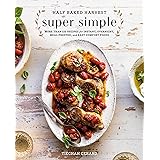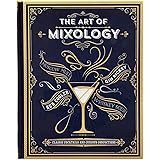When it comes to baking, especially with sourdough, the journey from mundane to magnificent often begins with an unexpected ingredient. Consider this: for at least 7,000 years, wheat has nourished civilizations, yet the wheat varieties we commonly encounter today are vastly different from their ancient ancestors. Modern flour is often bred for high yield and performance gluten, sometimes at the expense of flavor and nutritional depth.
The fascinating video above beautifully illustrates this point, taking us on a hands-on exploration of four prominent ancient wheats available in the US: spelt, einkorn, emmer, and kamut. It pits them head-to-head in a sourdough battle, revealing their unique baking characteristics, flavors, and textures. Let’s delve deeper into these heritage grains and understand why they are making a triumphant return to artisan kitchens.
The Resurgence of Ancient Grains in Sourdough Baking
Ancient grains refer to varieties of wheat that have remained largely unchanged for centuries, unlike modern wheat which has been extensively hybridized. Historically, these grains fell out of favor with the advent of industrial agriculture. This was primarily due to their tough hulls, requiring special processing equipment, and a more delicate gluten structure unsuitable for high-speed, large-scale industrial mixers.
However, the tide is turning. A vibrant revival in artisan bread baking, coupled with a growing interest in healthier, more flavorful food, has brought these grains back into the spotlight. Farmers are rediscovering their resilience; ancient wheat varieties often thrive in organic growing conditions, out-competing weeds and flourishing in poorer soils without heavy fertilization. This makes them an excellent choice for sustainable agriculture.
Unlocking Flavor, Nutrition, and Digestibility
Beyond their agricultural advantages, ancient grains offer compelling benefits for the baker and consumer alike. Firstly, they deliver an incredible spectrum of flavors, ranging from nutty and sweet to robust and earthy, which simply isn’t present in conventional white flour. This expanded flavor palette transforms a simple loaf of bread into a complex culinary experience.
Secondly, ancient wheats are nutritional powerhouses. They boast significantly higher protein levels compared to many modern wheat varieties, and they are rich sources of essential vitamins and minerals. For instance, spelt stands out as a complete protein, containing all nine essential amino acids—a rare find in the plant kingdom.
Furthermore, many believe ancient grains are more digestible than modern wheat. While studies exploring this are often funded by whole-grain advocacy groups, and counter-research from large wheat corporations exists, anecdotal evidence from many individuals suggests improved gut comfort. This may be due to differences in their gluten structure or the presence of specific compounds.
Understanding Each Ancient Grain: Spelt, Einkorn, Emmer, and Kamut
Each ancient wheat brings its own distinct personality to the baking process. Knowing their individual traits helps bakers make informed choices for their sourdough creations.
Einkorn: The Pioneer Grain
Einkorn, meaning “one kernel” in German, is often considered the oldest cultivated wheat, dating back at least 10,000 years. It is characterized by its tiny kernels and single floret per spikelet, a stark contrast to modern wheat’s three to five. Its flour is naturally rich in carotenoids, imparting a beautiful golden hue and contributing to its unique nutritional profile. Einkorn’s delicate gluten makes for a stickier dough but can yield a surprisingly light, fluffy crumb, as demonstrated in the video.
Emmer: Robust and Flavorful
Emmer, also known as farro, historically out-competed einkorn due to its greater resilience to heat and its ability to retain seeds better before harvest. Its kernels are slightly larger than einkorn’s, producing a soft flour with a reddish tint. Emmer is celebrated for its incredibly robust flavor and aroma, making it a favorite for bakers seeking a bold, earthy taste. While its gluten strength might be lower, its distinct culinary contribution is undeniable.
Spelt: The Versatile Relative
Spelt is a large, plump wheat variety that shares a closer genetic lineage with common bread wheat than einkorn or emmer. This connection often translates to spelt flour behaving somewhat similarly to modern wheat in baking applications, making it a good entry point for bakers transitioning to ancient grains. As previously mentioned, spelt is a complete protein source. Despite its workability, it can sometimes produce a denser crumb if not proofed carefully, as noted in the video’s comparison.
Kamut (Khorasan Wheat): Golden and Easy to Work With
Kamut is the commercial name for Khorasan wheat, native to a northeastern province of Iran. It is an ancestor of durum wheat, primarily used for pasta, and its thin, elegant kernels yield a soft, golden flour. Kamut dough is famously easy to handle, often described as a “dream to work with,” building excellent strength and requiring more hydration than other ancient varieties. It imparts a beautiful golden color to bread and often carries a subtly sweeter flavor profile.
The Ancient Grain Sourdough Experiment: Key Baking Takeaways
The hands-on comparison in the video underscores the importance of understanding how each ancient grain behaves in a sourdough environment. The experiment utilized a 60% ancient whole wheat flour and 40% organic white bread flour ratio, a common approach to balance the unique flavors of ancient grains with the structural support of modern wheat’s gluten.
For optimal results, fresh milling ancient grains just before baking is highly recommended. Milling at home, perhaps with a countertop mill like the KoMo mentioned, preserves the delicate flavors, fragrances, and nutritional value that rapidly degrade once flour is exposed to air.
Dough Dynamics and Hydration Needs
Working with these grains revealed significant differences in dough handling. Einkorn and emmer consistently produced stickier doughs, reflecting their lower gluten content. Managing them effectively, especially at higher hydrations like the 77% used in the video, requires a confident touch and proper technique, such as slap and folds.
Kamut, in contrast, proved to be particularly thirsty. The video noted adding an extra 50 grams of water, with the possibility of even more, highlighting its capacity to absorb liquid while still developing strong gluten. Spelt, surprisingly, could also be sticky initially but developed good strength, though it sometimes required longer proofing times.
Baking Performance and Crumb Observations
Despite some initial concerns about elasticity or proofing, all four ancient grain loaves baked up beautifully. The einkorn, despite its lower gluten, exhibited a surprisingly good rise and a wonderfully fluffy crumb. Emmer, though showing the weakest gluten strength in rise, delighted with a pleasant crumb structure and an exceptional depth of flavor and aroma.
Kamut and spelt generally achieved a more vertical rise and crisp “ears,” characteristic of well-baked sourdough. Kamut’s dough was remarkably easy to shape, yielding a stunning golden crust and a light, tender interior. Spelt, however, sometimes resulted in a denser crumb, suggesting a need for careful proofing adjustments to achieve maximum aeration.
Your Next Sourdough Adventure: Beyond Vanilla
The compelling comparison firmly positions Kamut as a top performer for its excellent gluten strength, ease of handling, beautiful golden crust, and delightful flavor, which can even be subtly sweeter. It truly transforms a 60% whole-wheat loaf into a visually stunning and delicious creation. However, the unique, robust flavor of Emmer makes it a champion in its own right for those seeking a profoundly aromatic and tasty bread.
Ultimately, the battle of the ancient grains is not about a single winner but about expanding your baking horizons. Each of these heritage wheats offers distinct advantages, whether it’s the unique color of einkorn, the bold taste of emmer, the versatile behavior of spelt, or the all-around performance of kamut. By incorporating these ancient grains into your sourdough, even just 25% to begin, you elevate your bread from simple sustenance to an extraordinary culinary art form. Embrace the “Technicolor” world of ancient wheat and discover the incredible flavors you’ve been missing.











